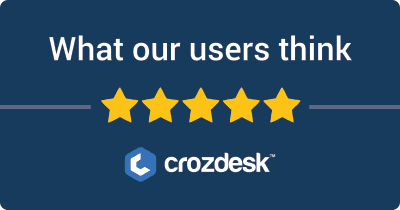
Introduction: Todoist vs. ClickUp: A Comparison of Task Management Tools
Todoist and ClickUp are two prominent players in the realm of task management tools, each catering to a diverse user base seeking to enhance productivity and organization. Todoist is primarily designed for individuals and small teams, offering a straightforward user interface that emphasizes simplicity in task creation and tracking. In contrast, ClickUp is a more robust platform aimed at teams of all sizes, integrating various project management features for comprehensive workflow management.
Users gravitate toward these tools for their ability to streamline tasks, prioritize workloads, and improve collaboration. Todoist is favored for its ease of use and minimalist approach, while ClickUp attracts teams looking for a versatile solution that encompasses tasks, projects, and communications within one platform.
Primary Comparison Aspects:
-
Features: Todoist provides essential task management functionalities, such as project organization, task prioritization, and due dates. ClickUp goes further with customizable views, advanced reporting, and integration with numerous third-party applications.
-
Pricing: Todoist offers a freemium model with basic features available for free, while premium features are unlocked through a subscription. ClickUp has a free tier as well but is more feature-rich, with tiered pricing plans that cater to both small and large organizations.
-
Ease of Use: Todoist is often lauded for its intuitive design, making it easy for new users to get started. ClickUp, while powerful, may have a steeper learning curve due to its extensive features, which could overwhelm first-time users.
By examining these key aspects, users can make an informed decision based on their specific task management needs and preferences.
Todoist VS ClickUp: Which tool is the most popular?
| Tool | Number of Reviews | Average Rating | Positive Reviews | Neutral Reviews | Negative Reviews |
|---|---|---|---|---|---|
| Todoist | 13 | 3.46 | 7 | 2 | 4 |
| ClickUp | 76 | 4.17 | 64 | 1 | 11 |
ClickUp is the most popular tool, with 76 reviews and an average rating of 4.17, indicating strong user satisfaction. In contrast, Todoist is the least popular, receiving 13 reviews and an average rating of 3.46, suggesting a more mixed user experience.


Todoist and ClickUp: Quick Comparison Overview
| Feature/Aspect | Ahrefs | SEMrush |
|---|---|---|
| Primary Features | – Site Explorer – Keyword Explorer – Backlink Checker – Content Explorer – Rank Tracker |
– Keyword Research – Site Audit – Position Tracking – Content Analyzer – Marketing Insights |
| Target Audience | – SEO professionals – Digital marketers – Agencies focusing on content marketing and backlink analysis |
– Digital marketers – SEO experts – Content marketers – Social media marketers and PPC specialists |
| Main Advantages | – Robust backlink analysis – Comprehensive keyword data – Intuitive user interface – Constantly updated index |
– All-in-one digital marketing tool – Extensive competitor analysis – Wide array of tools for SEO and PPC – Integrated social media management |
| Core Value Proposition | Focused on providing in-depth SEO insights, particularly strengths in backlink profiles and organic keyword rankings. Ideal for users prioritizing content strategy and link-building efforts. | Offers a holistic view of digital marketing, making it easier to manage all aspects of online presence through an extensive range of tools for SEO, PPC, and social media marketing. |
| Ideal Use Cases | – Conducting comprehensive link audits – Developing effective content strategies – Tracking backlinks and organic rankings – Keyword planning for SEO campaigns |
– Managing and optimizing PPC campaigns – Conducting competitive analysis for market positioning – Comprehensive content analytics and SEO tracking – Social media metrics and management |
Most liked vs most disliked features of Todoist and ClickUp
| Feature | Todoist | ClickUp |
|---|---|---|
| Most Liked Features | – Efficient task entry with minimal keystrokes. – User-friendly interface for navigation and organization. – Customizable tasks, subtasks, and projects. – Seamless synchronization across devices and integrations (e.g., Google Calendar, Slack). – Responsive customer service for issue resolution. |
– Highly customizable fields, dashboards, and views. – Effective project management and task tracking features. – Automation features streamline workflows. – Strong integration capabilities with other applications. – Intuitive user experience for managing projects. |
| Most Disliked Features | – Ongoing bugs, such as SNOOZE reminder malfunctions. – Minor issues that disrupt workflow. – Insufficient customer service responses to bugs. – Critical functionalities require a paid subscription. – Performance drawbacks compared to alternatives. |
– Slow loading times and laggy performance, especially on desktop. – Overwhelming feature set for new users. – Mobile app lacks depth and usability. – Complex task creation options can cause confusion. – Numerous notification settings may lead to missed updates. |
Key Features of Todoist vs ClickUp
Sure! Here’s a comparison of the key features of Todoist and ClickUp, highlighting how each benefits users and noting any unique aspects of each brand.
Todoist
-
Task Organization
- Users can organize tasks into projects, allowing for clear categorization of work. This structure benefits users by decluttering their to-do lists and making it easier to track progress on specific areas or goals.
- Unique Aspect: The use of sub-tasks allows for a hierarchical organization that can be very effective in breaking down larger projects.
-
Due Dates and Recurring Tasks
- Todoist enables users to set due dates for tasks and create recurring tasks (e.g., daily, weekly, monthly). This helps users manage deadlines and ensure that tasks that require repeated attention don’t get overlooked.
- Unique Aspect: Natural language processing allows users to type in dates casually (e.g., “next Friday”), making it quick and intuitive to set deadlines.
-
Priority Levels
- Users can assign priority levels to tasks (Priority 1 to 4), helping to highlight the most critical tasks. Prioritization improves focus on urgent matters and aids in effective time management.
- Unique Aspect: The color-coding of priority levels makes it visually easy to distinguish urgency at a glance.
-
Karma Points
- Todoist gamifies productivity by rewarding users with Karma points based on completed tasks and streaks. This motivates users to stay on task and create consistent work habits.
- Unique Aspect: The Karma system introduces a playful and competitive element into productivity that encourages users to improve their workflow.
-
Labels and Filters
- Users can label tasks and create customizable filters to streamline their task views. This feature enhances sorting and finding tasks specific to context or type of work.
- Unique Aspect: This offers a flexible way to manage personal workflows tailored to individual needs, unlike many simpler list tools.
-
Collaboration and Sharing
- Todoist allows users to share projects and assign tasks to others, facilitating team collaboration and project management, which is essential for group tasks.
- Unique Aspect: The simple interface makes it easy for teams to adopt and use without complicated setup.
ClickUp
-
Multiple View Options
- ClickUp offers a variety of views (List, Board, Calendar, Gantt, etc.) to visualize tasks in the way that works best for the user. This caters to different work styles and preferences and enhances productivity.
- Unique Aspect: The customization of views allows teams to work in both agile and more traditional project management frameworks seamlessly.
-
Task Customization
- ClickUp provides extensive task customization options (custom fields, statuses, etc.), allowing users to create tasks that fit their specific needs. This adaptability benefits more complex projects requiring tracking beyond basic features.
- Unique Aspect: Its ability to customize tasks extensively makes it suitable for a wide range of industries and workflows, from simple to highly intricate.
-
Time Tracking
- Built-in time tracking allows users to monitor how long tasks take directly within the app. This feature assists in managing time effectively and understanding work habits better.
- Unique Aspect: The ability to generate reports based on tracked time aids in more profound insights into productivity and resource allocation.
-
Goals and Objectives
- ClickUp lets users set and manage goals within the platform. This feature supports alignment with broader objectives and allows users to track progress towards meeting their aims.
- Unique Aspect: The goal-tracking capability links day-to-day tasks with larger organizational objectives, enhancing strategic alignment.
-
Integrations and Automation
- With thousands of integrations and built-in automation features, ClickUp allows users to streamline their workflows by connecting with other tools they already use and automating repetitive tasks.
- Unique Aspect: The level of automation available makes ClickUp particularly strong in reducing manual effort, which other tools may not match.
-
Team Collaboration Tools
- ClickUp includes features like comments, mentions, and file sharing to boost team collaboration directly within tasks. This functionality creates a centralized communication hub, minimizing the need for external communication platforms.
- Unique Aspect: The depth of collaborative tools within the task environment makes it an all-in-one solution for teams that need to work closely together.
Conclusion
Both Todoist and ClickUp have their strengths in task management. Todoist excels in simplicity, intuitive design, and gamification, making it great for personal use and lightweight team collaborations. In contrast, ClickUp provides extensive customization and feature-rich capabilities suited for larger teams and complex projects. Depending on the complexity of tasks and team dynamics, users can choose the tool that best fits their needs.
Todoist vs ClickUp Pricing Comparison
| Feature | Todoist | ClickUp |
|---|---|---|
| Free Tier | Free for basic features | Free for basic features with 100 MB storage |
| Monthly Subscription Prices | – Pro: $4/month | – Unlimited: $5/month |
| – Business: $6/month | – Business: $12/month | |
| – Business Plus: $8/month | – Enterprise: Custom pricing | |
| Annual Subscription Prices | – Pro: $36/year ($3/month) | – Unlimited: $60/year ($5/month) |
| – Business: $72/year ($6/month) | – Business: $120/year ($12/month) | |
| – Business Plus: $96/year ($8/month) | – Enterprise: Custom pricing | |
| Key Features of Pro Tier | – Task and project management | – Unlimited integrations |
| – Reminders and recurring due dates | – Goals and OKRs | |
| – Comments and file uploads | – Time tracking | |
| – Labels and filters | – Custom fields | |
| Key Features of Business Tier | – Team management features | – Advanced collaboration tools |
| – Priority support | – Time tracking and reporting | |
| – Admin and member roles | – Custom statuses | |
| Key Features of Business Plus Tier | – Team collaboration tools | – White labeling |
| – Team inbox | – High-priority support | |
| – Project templates | – Advanced automation | |
| Discounts/Offers | – 30-day free trial for Pro tier | – 14-day free trial for all paid plans |
| – Discounts for non-profits available | ||
| – No credit card required for trials |
Summary of Differences
- Pricing Structure: Todoist offers lower monthly prices at the Pro level compared to ClickUp’s Unlimited plan but increases significantly with added features.
- Features: ClickUp offers a more robust set of features at lower entry prices, particularly for project management and team collaboration tools.
- Free Tier: Both tools come with a free tier, but ClickUp’s free version allows for more storage and features.
- Discounts: Todoist provides a longer free trial for its Pro tier, whereas ClickUp has a shorter free trial for all tiers and offers potential discounts for non-profits.
Support Options Comparison: Todoist vs ClickUp
| Feature | Todoist | ClickUp |
|---|---|---|
| Live Chat | Not available. | Available during business hours. |
| Phone Support | Not available. | Not available. |
| Documentation | Comprehensive help articles, FAQs, and guides provided on the website. | Extensive documentation including articles, guides, and FAQs. |
| Additional Resources | Offers limited resources like the Todoist blog and community forums. | Provides extensive resources, including webinars, tutorials, and a community forum. |
Unique Features of Todoist Vs ClickUp
| Feature | Todoist Unique Features | Added Value | ClickUp Unique Features | Added Value |
|---|---|---|---|---|
| Natural Language Processing | Allows users to input tasks using everyday language (e.g., "tomorrow at 3 PM"). | Provides intuitive task creation, reducing time spent on entering tasks. Users can quickly add deadlines and other details with minimal effort. | Custom Statuses | |
| Karma & Productivity Tracking | Assigns Karma points for completed tasks, incentivizing productivity. | Motivates users to stay productive by offering a gamified experience. Encourages consistent use of the app and completion of tasks. | Docs Integration | |
| Sub-tasks & Nested Projects | Supports organizing tasks with sub-tasks and nested projects to a certain level. | Helps users break down large projects into manageable parts, enhancing clarity and organization of work. | Multi-Task Toolbar | |
| Labels & Filters | Custom labels for tasks and advanced filters for focused task views. | Enables personalized organization and prioritization of tasks, allowing users to view only what’s relevant. | Time Tracking | |
| Recurring Tasks | Flexible recurring task options tailored to individual user needs. | Simplifies the process of scheduling repetitive tasks, making it easier to maintain regular habits, such as daily or weekly chores. | Automations | |
| Priority Levels | Prioritize tasks with color-coded priority levels (e.g., P1, P2, etc.). | Allows users to easily differentiate urgent tasks from less important ones, enhancing time management. | Mind Maps |
Unique features of both Todoist and ClickUp cater to diverse user needs, offering flexibility, efficiency, and enhanced organization. These functionalities can be decisive factors when users evaluate task management solutions based on their specific methods of work, collaboration requirements, and productivity goals.


